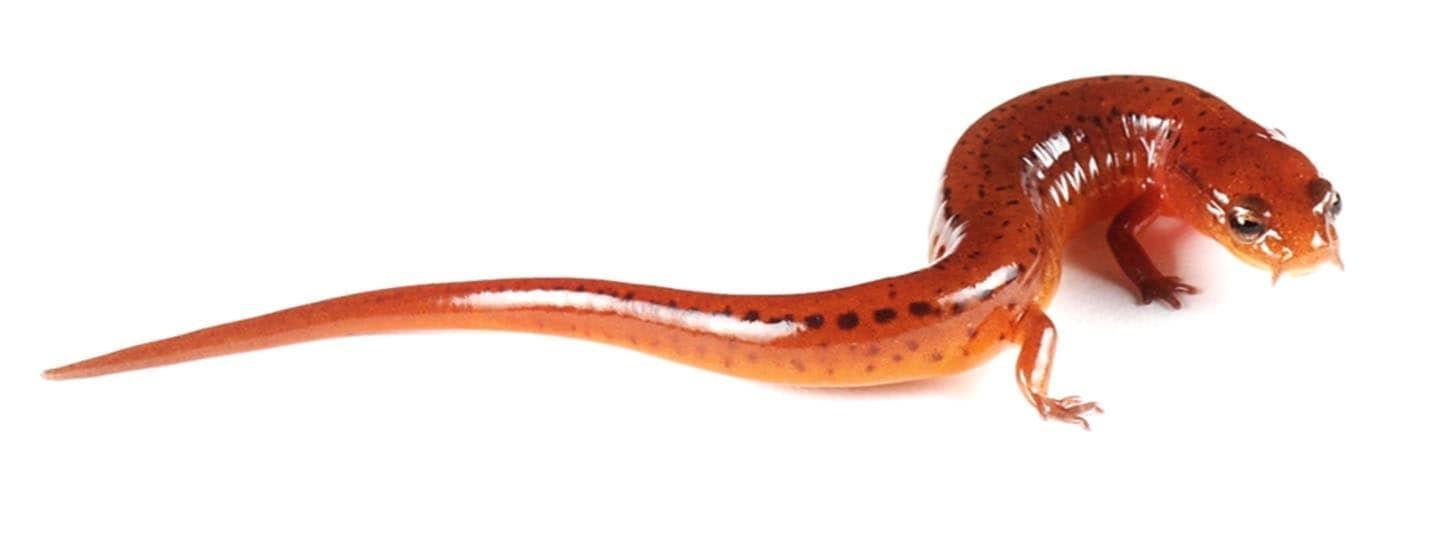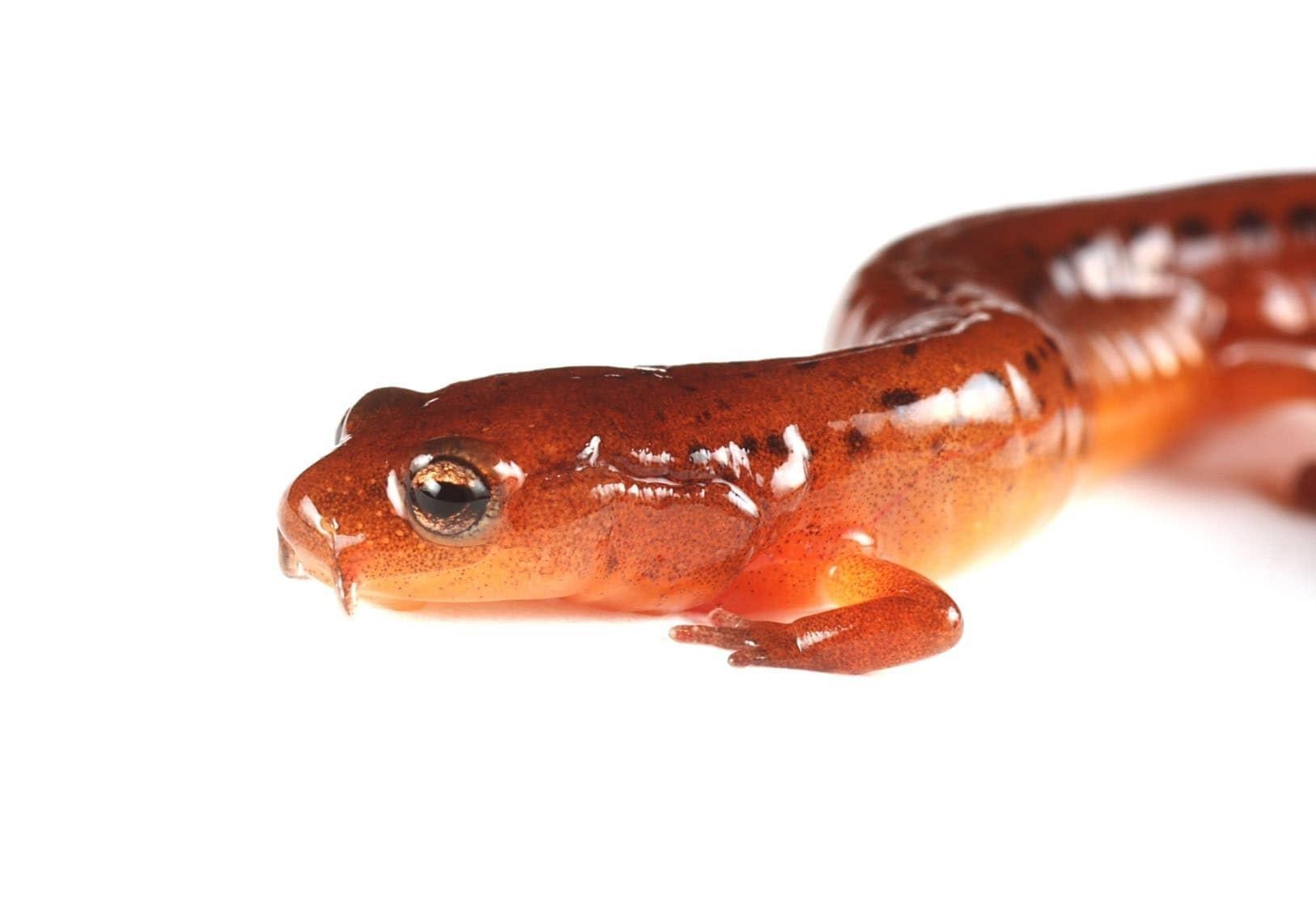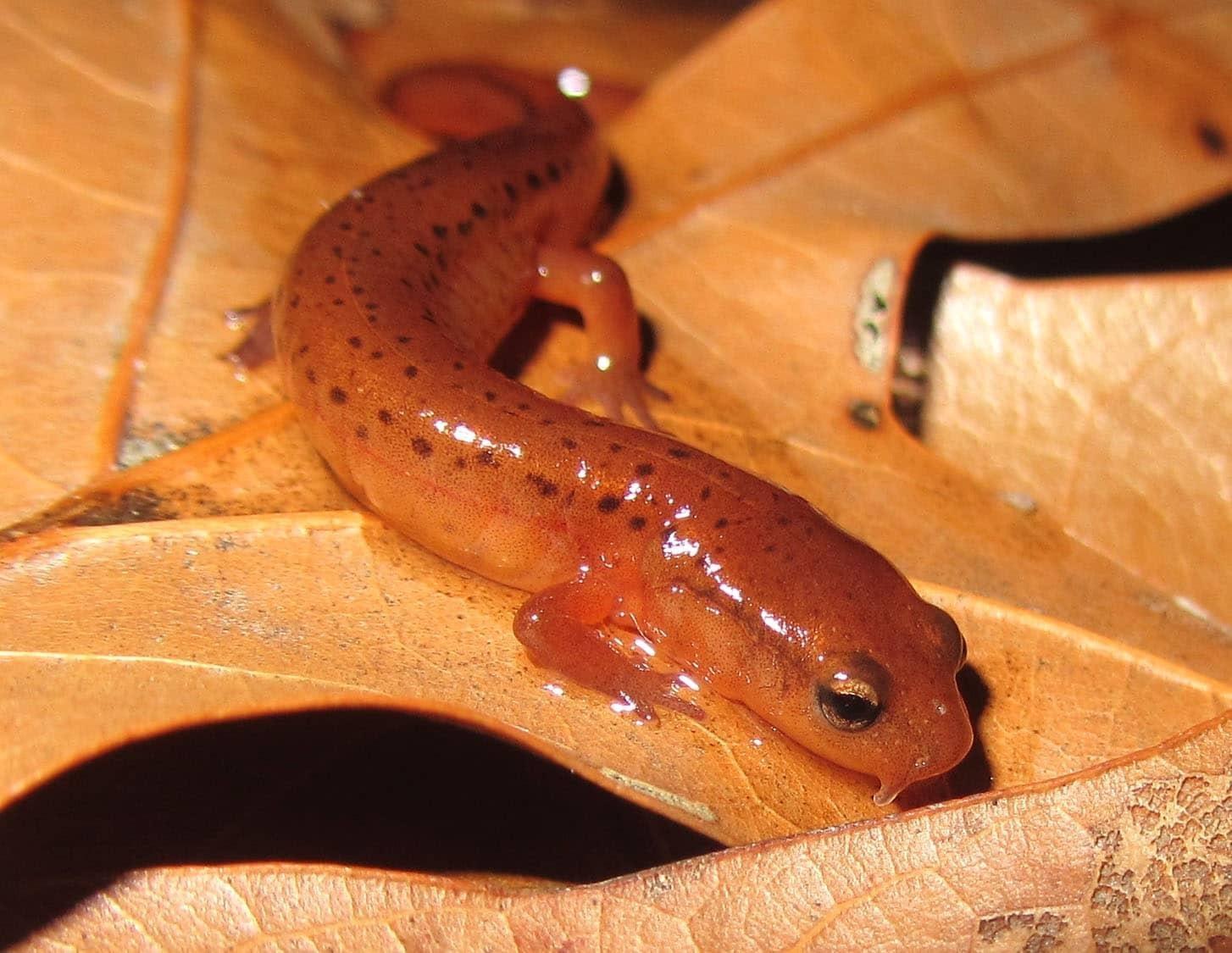Introducing North Carolina’s Newest Salamander


North Carolina is a state rich in salamander species, until recently boasting a grand total of 63, which is more than any other state in the country! But researchers have recently discovered a new species: meet the Carolina Sandhills Salamander (Eurycea arenicola).

There are a lot things that make this newest species of salamander unique. The red color first and foremost. Next, this salamander has only been found in a small area of the state: Harnett, Hoke, Montgomery, Moore, Richmond, Robeson, and Scotland counties. You guessed it, roughly the Sandhills region.
And as you might expect, it lives in springs and small blackwater streams, usually with a hardwood corridor, in the Longleaf Pine ecosystem. Essentially, what you find in the Sandhills.

But here’s the backstory of how researchers finally confirmed what really makes the Carolina Sandhills Salamander unique.
Scientists at the North Carolina Museum of Natural Sciences actually collected the first specimens of the salamander back in October, 1969. More specimens were collected in the 1970’s. Researchers began studying the species in the 1980’s. The Carolina Sandhills Salamander was previously lumped in as an unusual population of the Southern Two-Lined Salamander (Eurycea cirrigera).
Not long afterwards, a scientist at the Smithsonian suggested that it may be a distinct species of salamander, but because the genetics of the Two-lined Salamander are very complex, the technology available at the time didn’t allow for much more study to be completed.
Fast forward almost three decades. In 2013, scientists were awarded grants from the National Science Foundation to study the salamander. They were able to use the Museum’s next generation genetic sequencer to study a large enough selection of genes from enough specimens to a confirm the sandhill salamander is a distinct species.
The researchers found the new species differs genetically (in both the mitochondrial and nuclear genome) from other two-lined salamanders. It also differs in coloration, size and in its natural history from other two-lined salamanders.
So let’s welcome North Carolina’s newest salamander!